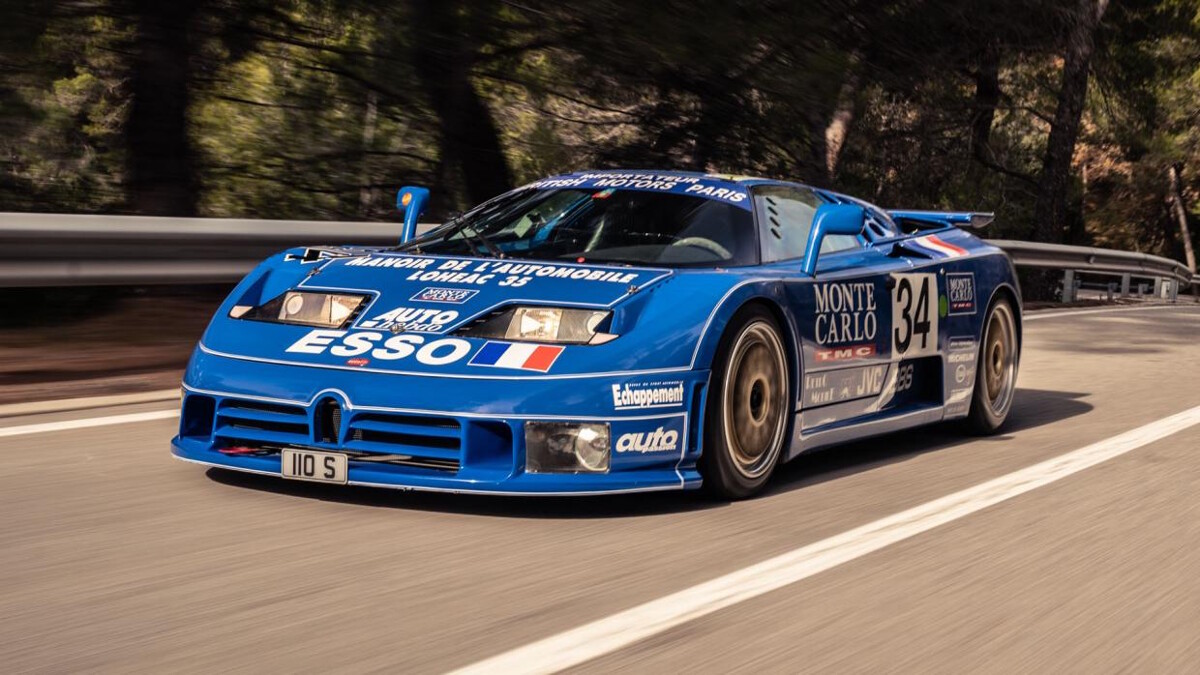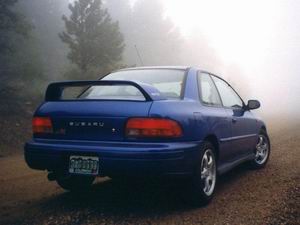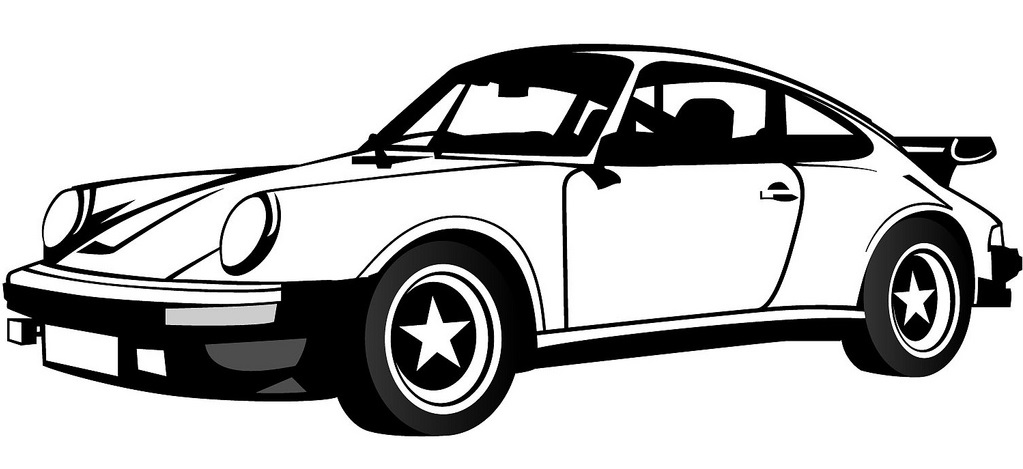A brief history of
Bugatti
Introduction
The car manufacturer Bugatti has made an important impact on the automotive world. In this article we will give a brief but detailed history of the Bugatti marque.
We will look at the origins of Bugatti looking at who, why, where and when Bugatti was founded. We'll look at the design of the iconic Bugatti logo and what are some the more significant Bugatti models.
We'll take a glance at what racing history the Bugatti has and who some of the most important people have been in the history of Bugatti over the years.
Who, where, when and why was
Bugatti founded?
Bugatti, the renowned automotive company, was founded by Ettore Bugatti in Molsheim, France, in 1909. The establishment of Bugatti was a testament to Ettore's lifelong passion for automobiles and his pursuit of engineering excellence combined with artistic design. This 1000-word essay explores the story of Bugatti's foundation, shedding light on the visionary behind the brand, the historical context of its inception, and the driving factors that led to its creation.
Ettore Bugatti, an Italian-born engineer and designer, was born on September 15, 1881, in Milan, Italy. From an early age, Ettore exhibited exceptional talent and an innate fascination with all things mechanical. He displayed a particular interest in automobiles and quickly established himself as a visionary in the automotive industry. Ettore's passion for cars led him to study engineering in Milan, and he soon embarked on a journey that would culminate in the founding of his eponymous brand.
The turning point for Ettore Bugatti came in 1902 when he moved to Alsace, a region known for its flourishing automotive industry. Ettore secured a job with the renowned De Dietrich company, where he honed his skills and gained valuable experience in design and engineering. His tenure at De Dietrich played a crucial role in shaping his vision and provided him with the necessary foundation to pursue his dream of building exceptional automobiles.
Motivated by a desire to create cars that combined innovation, performance, and artistic elegance, Ettore Bugatti decided to establish his own automotive company. In 1909, he founded Bugatti in Molsheim, a picturesque town located in the Alsace region of France. Molsheim offered an ideal location for Ettore's venture, providing access to skilled craftsmen and engineers while being situated in close proximity to potential customers and suppliers.
The decision to found Bugatti was driven by Ettore's relentless pursuit of perfection and his belief that automotive engineering should go beyond mere functionality. He aimed to create cars that were not only mechanically advanced but also reflected a sense of artistry and craftsmanship. Ettore's vehicles were envisioned as works of art on wheels, blending cutting-edge technology with luxurious aesthetics.
Bugatti's inaugural model, the Type 13, debuted in 1910 and quickly gained attention for its exceptional performance and striking design. The success of the Type 13 laid the foundation for Bugatti's future endeavors and solidified the brand's reputation as a purveyor of extraordinary automobiles.
Ettore Bugatti's unwavering dedication to quality, innovation, and aesthetic appeal became the driving force behind the company's continued growth and success. Bugatti's cars were characterized by their elegant lines, meticulous attention to detail, and pioneering engineering solutions. Ettore's passion for perfection permeated every aspect of his creations, from the engine design to the coachwork, resulting in cars that were not only mechanically advanced but also objects of beauty.
The establishment of Bugatti marked a significant milestone in the history of automotive engineering. Ettore Bugatti's visionary approach and uncompromising pursuit of excellence set the stage for the brand's enduring legacy. Bugatti's commitment to pushing the boundaries of automotive design and performance continues to captivate enthusiasts and collectors around the world.
In conclusion, Bugatti was founded by Ettore Bugatti in Molsheim, France, in 1909. Ettore's passion for automobiles, his experience in the industry, and his aspiration to create extraordinary vehicles converged, leading to the establishment of his own automotive company. Bugatti's foundation was driven by Ettore's relentless pursuit of perfection, a vision that sought to combine engineering innovation with artistic design. From its inception, Bugatti set out to redefine automotive excellence.
How did the
Bugatti logo originate?

How did the Bugatti logo originate?
The Bugatti logo is an iconic symbol that represents the rich history and engineering prowess of the renowned luxury automobile brand. It has undergone several transformations since the company's inception in 1909, evolving to reflect the brand's identity and values.
The original Bugatti logo featured the initials of the founder, Ettore Bugatti, in an elegant cursive script. This emblem was designed to exude elegance and sophistication, which were the core principles of the Bugatti brand. The letter "B" was interwoven with the letter "E" to form a distinctive and artistic logo.
In the 1930s, a new logo was introduced, known as the "Macaron." This logo featured an oval shape with the Bugatti name inscribed in bold lettering. The Macaron symbolized luxury and exclusivity, and it became synonymous with the brand. The logo was often colored to match the car's bodywork, adding a touch of customization and craftsmanship.
During the years following World War II, Bugatti faced financial difficulties and went through a period of dormancy. It wasn't until the 1990s that the brand was revived under the ownership of the Volkswagen Group. With the revival came a new logo, combining the traditional cursive "Bugatti" script with a modern interpretation of the Macaron emblem. This logo, which is still used today, represents a blend of tradition and innovation, paying homage to Bugatti's heritage while embracing its future.
Overall, the Bugatti logo has evolved over the years, adapting to the changing times and reflecting the brand's values. It remains an iconic symbol of luxury, craftsmanship, and performance, representing the enduring legacy of the Bugatti name in the automotive industry.
What are some of the significant
Bugatti models?
Bugatti, the renowned luxury automobile brand, has produced a series of exceptional and groundbreaking models throughout its illustrious history. From classic masterpieces to modern marvels, Bugatti has consistently pushed the boundaries of automotive engineering and design. Let's explore some of Bugatti's most significant models:
1. Bugatti Type 35 (1924-1931): The Bugatti Type 35 is one of the most successful racing cars of all time. It dominated the motorsport scene in the 1920s, securing over 2,000 victories. With its lightweight chassis, advanced suspension, and powerful engine, the Type 35 set new standards for performance and handling.
2. Bugatti Veyron (2005-2015): The Bugatti Veyron made a resounding impact when it was introduced. It was the first production car to surpass the 1,000 horsepower mark, thanks to its 8.0-liter quad-turbocharged W16 engine. With a top speed of over 250 mph, the Veyron held the title of the world's fastest production car for many years.
3. Bugatti Chiron (2016-present): Building on the success of the Veyron, the Bugatti Chiron took hypercar performance to new heights. It boasts a staggering 1,500 horsepower and can reach a top speed of 261 mph. The Chiron combines power, elegance, and luxurious craftsmanship, embodying Bugatti's commitment to excellence.
4. Bugatti EB110 (1991-1995): The Bugatti EB110 marked the brand's revival after a period of dormancy. It was a technologically advanced supercar of its time, featuring a quad-turbocharged V12 engine, all-wheel drive, and a carbon fiber body. The EB110 showcased Bugatti's engineering prowess and set the stage for its future models.
5. Bugatti Royale (1927-1933): The Bugatti Royale, also known as the Type 41, was a grand luxury car designed for royalty and the elite. With its massive proportions and opulent interior, it was a symbol of extravagance and sophistication. Only a handful were ever produced, making it one of the rarest and most exclusive Bugattis.
6. Bugatti Type 57 (1934-1940): The Bugatti Type 57 was a blend of elegance and performance. It featured a streamlined design, luxurious appointments, and a powerful engine. The Type 57 spawned various versions, including the iconic Type 57SC Atlantic, with its distinctive teardrop shape and limited production run.
7. Bugatti Divo (2018-present): The Bugatti Divo is a limited-edition hypercar designed for extreme performance on the track. With its enhanced aerodynamics, reduced weight, and increased downforce, the Divo delivers unparalleled agility and cornering capability. Limited to just 40 units, it represents the pinnacle of exclusivity.
These are just a few of the many remarkable models that have graced the Bugatti lineup over the years. Each one has left an indelible mark on the automotive world, pushing the boundaries of what is possible in terms of speed, power, and luxury. Bugatti's commitment to innovation and craftsmanship continues to drive the brand forward, captivating automotive enthusiasts and collectors worldwide.

One of Bugatti's Most Iconic Models
Who are some of the most important people in
Bugatti's History
Bugatti, the esteemed luxury automobile brand, owes much of its success and legacy to the contributions of several significant individuals who have left an indelible mark on the company's history. From visionary founders to talented engineers and designers, these individuals have played a pivotal role in shaping Bugatti into the iconic brand it is today. Let's delve into the lives and achievements of some of Bugatti's most significant people:
1. Ettore Bugatti (1881-1947): The name that stands at the forefront of Bugatti's history is that of its founder, Ettore Bugatti. A visionary engineer and designer, Ettore possessed an innate talent for creating groundbreaking automobiles. His relentless pursuit of perfection led to the creation of remarkable vehicles that combined exquisite design, technical innovation, and exceptional performance. Ettore's passion and dedication laid the foundation for Bugatti's legacy.
2. Jean Bugatti (1909-1939): The son of Ettore Bugatti, Jean Bugatti inherited his father's genius and became an integral part of the Bugatti brand. As a gifted designer and engineer, Jean was responsible for some of Bugatti's most iconic models, including the Type 57SC Atlantic and the Type 41 Royale. His extraordinary sense of style and attention to detail gave Bugatti cars a distinct and timeless aesthetic.
3. Romano Artioli (1932-present): In the modern era, Romano Artioli played a crucial role in reviving the Bugatti brand. In the early 1990s, he acquired the rights to the Bugatti name and spearheaded the development of the Bugatti EB110, a technologically advanced supercar. Artioli's passion and entrepreneurial spirit brought Bugatti back into the limelight, showcasing its engineering excellence and reigniting interest in the brand.
4. Wolfgang D�rheimer (1958-present): As the former CEO of Bugatti, Wolfgang D�rheimer played a pivotal role in the success of the Bugatti Veyron and the subsequent development of the Bugatti Chiron. Under his leadership, Bugatti pushed the boundaries of automotive performance and set new standards for hypercars. D�rheimer's strategic vision and commitment to excellence solidified Bugatti's position as a leader in the luxury automotive market.
5. Achim Anscheidt (1971-present): As the current Design Director of Bugatti, Achim Anscheidt continues the tradition of exquisite design and innovation. Anscheidt has brought a fresh perspective to the brand while staying true to Bugatti's heritage. His creative vision has resulted in stunning vehicles that capture the essence of Bugatti's DNA, combining elegance, power, and aerodynamic prowess.
6. Loris Bicocchi (1958-present): Loris Bicocchi is a legendary test driver who has been instrumental in refining the performance and handling of Bugatti's modern hypercars. Bicocchi played a crucial role in the development and testing of both the Veyron and the Chiron, ensuring that these vehicles delivered the ultimate driving experience. His expertise and feedback have helped Bugatti achieve unparalleled levels of performance and precision.
7. The Bugatti Owners: Finally, the Bugatti legacy would not be complete without acknowledging the passionate and dedicated owners who have cherished and preserved these remarkable automobiles over the years. Their commitment to the brand and their love for Bugatti's exceptional craftsmanship have contributed to the mystique and allure of Bugatti.
These individuals, among many others, have played integral roles in the history and success of Bugatti. Their vision, talent, and dedication have shaped the brand and its extraordinary automobiles. Bugatti's commitment to excellence and innovation continues to be carried forward by the talented individuals who contribute to the brand's ongoing legacy.

One of the most influential people in the history of Bugatti
Bugatti's Racing History
Bugatti's racing history is intertwined with the brand's pursuit of automotive excellence. From its early days, Bugatti established a formidable presence on the racing circuits, showcasing its engineering prowess and setting numerous records. In this 1000-word essay, we will explore Bugatti's racing heritage, highlighting its triumphs, iconic race cars, and the drivers who etched Bugatti's name into the annals of motorsport.
Bugatti's racing legacy began with its founder, Ettore Bugatti, who firmly believed in proving the capabilities of his cars on the track. In the 1920s and 1930s, Bugatti dominated the racing scene, securing victories and championships across various prestigious events.
One of Bugatti's most celebrated race cars is the Bugatti Type 35. Introduced in 1924, this lightweight and agile racer quickly established itself as an unrivaled force. The Type 35 won over 1,000 races, including grand prix events, hill climbs, and endurance races. It became synonymous with Bugatti's dominance and technical superiority. Notable victories include the Targa Florio, the French Grand Prix, and the Monaco Grand Prix.
Bugatti's racing success reached its pinnacle at the 24 Hours of Le Mans, one of the world's most demanding endurance races. In 1937, the Bugatti Type 57G Tank, designed by Jean Bugatti, triumphed at Le Mans. Driven by Jean-Pierre Wimille and Robert Benoist, the Type 57G Tank showcased exceptional speed, reliability, and endurance, solidifying Bugatti's reputation as a formidable competitor.
Bugatti continued its racing endeavors in the post-war era. In the 1950s, the brand participated in Formula One racing with limited success. However, it was in the realm of sports car racing that Bugatti made a significant impact.
The Bugatti Type 251, designed for Formula One competition, made its debut in 1955. Although the car showed promise with its innovative design and powerful engine, financial difficulties and other challenges hampered its racing career. Bugatti's Formula One project was eventually abandoned, marking the end of its official involvement in the pinnacle of single-seater racing.
Bugatti's racing heritage experienced a revival in the modern era with the introduction of the Bugatti Veyron. While primarily renowned as a road car, the Veyron Super Sport variant made headlines by setting a Guinness World Record for the fastest production car in 2010, reaching a top speed of 267.856 mph. This achievement showcased Bugatti's commitment to pushing the limits of automotive performance.
In recent years, Bugatti has continued to demonstrate its racing DNA through events and limited-edition race-inspired models. The Bugatti Divo, named after the renowned French racing driver Albert Divo, is a prime example. Built for exceptional handling and agility, the Divo pays homage to Bugatti's racing heritage while offering an unparalleled driving experience.
Throughout Bugatti's racing history, numerous talented drivers have showcased their skills behind the wheel of Bugatti race cars. Drivers such as Jean-Pierre Wimille, Albert Divo, and Louis Chiron contributed to the brand's success and left an indelible mark in motorsport history. Their prowess, combined with Bugatti's engineering excellence, propelled the brand to numerous victories and cemented its legacy as a force to be reckoned with on the racetrack.
Bugatti's racing history embodies the brand's dedication to performance, innovation, and a relentless pursuit of victory. From the dominance of the Bugatti Type 35 to the triumphs at Le Mans, Bugatti's racing heritage serves as a testament to the brand's engineering prowess and its unwavering commitment to pushing the boundaries of automotive excellence.
Summary
Bugatti is a renowned luxury automobile brand with a rich history and a reputation for pushing the boundaries of performance and engineering excellence. From its inception in 1909, Bugatti has been synonymous with elegance, innovation, and unparalleled craftsmanship. The brand's iconic models, such as the Bugatti Type 35 and the Veyron, have left an indelible mark on the automotive world.
With its distinctive design language and powerful engines, Bugatti has consistently delivered exceptional performance and set new benchmarks for speed and luxury. From dominating racing circuits in the 1920s to producing some of the fastest production cars in the world, Bugatti has captured the imagination of enthusiasts and collectors alike. The brand's commitment to precision and attention to detail is evident in every aspect of its vehicles, from their aerodynamic forms to their meticulously crafted interiors.
View Bugatti Car Specifications
More Manufacturer Histories.


























